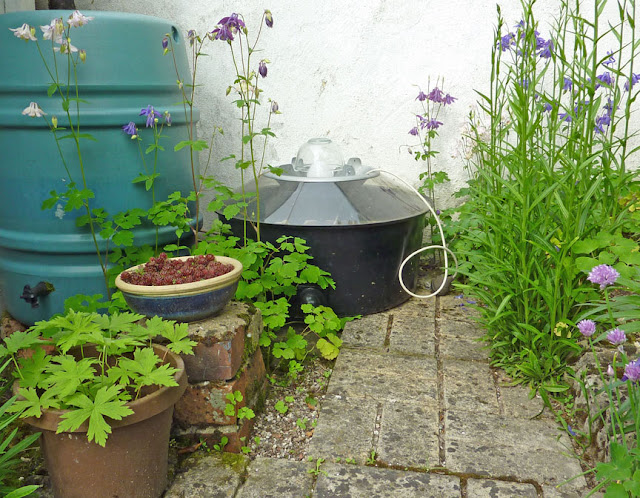30 years of the back garden moth trap
I recently mentioned that we have lived in our house for almost 30 years, and during that time have run a moth trap in the garden. It seems a good time to look back over those 'mothing years' and try and pick out any themes, trends, surprises, gains and losses. One post cannot do it justice, so thought I'd kick it all off with a look at the site itself.
On August 14th 1987, Katrina and I moved into our three bedroomed house in Banstead, northern Surrey. It is an area that could best be described as 'leafy suburbia', positioned between Banstead Downs and Epsom Downs, relatively high on the chalk, and surrounded by 1930s housing.
Most of the houses nearby had mature gardens, varying in sizes. Ours was well stocked with plants, had a 30ft front and 90ft back garden, which butted up to an area of 'wild' ground. A mature ash tree, a Lawson's Cypress and a small pond were further features. During the past thirty years there have been changes - the wild ground has been built upon, the Lawson's Cypress felled and many plants and shrubs have come and gone. The neighbouring gardens are still largely intact, although there has been a tendency for front gardens to be paved over for the parking of cars - even though all the houses do have driveways. The chances are that there is less vegetation now than there was thirty years ago, but not appreciably less. The road is tree-lined, and although most of these cherry trees have been reaching old age, most that have needed to be felled have been replaced.
An actinic trap was run between August 1987 - February 1990, when I purchased a Robinson MV, the very same trap that is still in use today. I position the trap so that no neighbour can directly see the bulb, and I have been fortunate that nobody has been bothered by the light (at least not to my knowledge). My enthusiasm has waxed and waned. Up until the late 1990s the trap would be switched on most nights, even during the winter, and even if I say so myself, became quite proficient in the dark art of moth identification. However, peaks and troughs in the intervening years has seen this thin veneer of competence knocked off, so that I currently find myself in need of having to go back to 'moth school' to regain what I have lost. There were one or two years where the trap stayed inside, but even during years of relative idleness there would be burst of enthusiasm, normally during the summer months or periods of possible migration.
Macros and pyralids were my thing. I would identify (if possible) and count each and every one and produce end of year reports. This carried on until 1998, when, with 10 years of full data, I stopped. The time spent processing the trap was all too much, what with a career and children, not to mention a patient wife whose patience was being constantly tested. Since then I have noted down whatever took my fancy, normally the scarce or unusual. I started to dabble in micros maybe 10 years ago, but this avenue of study has experienced something of a stop/start nature. It is currently in start mode!
Numbers of moths have fallen. I think it fair to suggest that the late 1980s and early 1990s saw the highest totals trapped, these rapidly falling away by the turn of the millennium. I will be more specific in later posts.
No two years have been the same. Every night can bring rewards, whether that be a migrant, a wanderer, the sudden influx of a species, a year first, or an aberration. Even after all these years I still switch the trap on in hope, and approach it in the morning with anticipation.



Comments